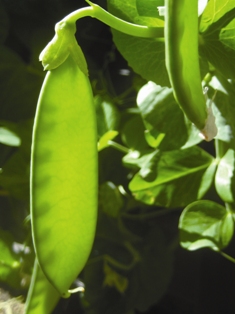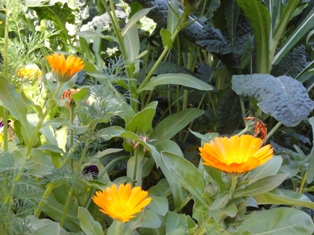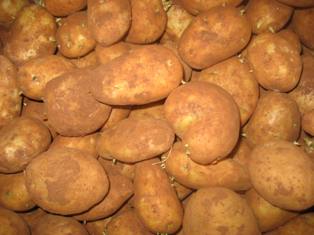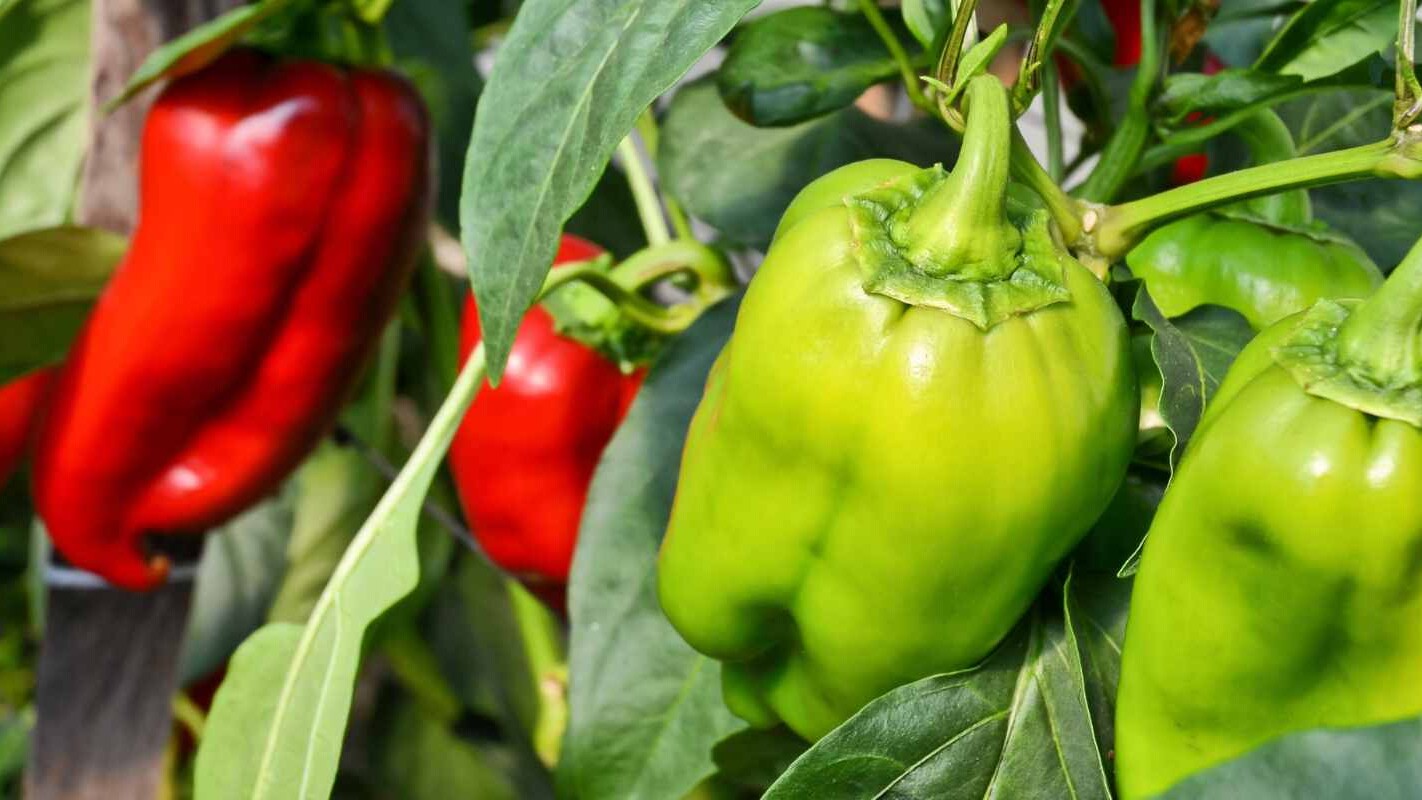While the southern parts of Australia have donned winter pyjamas and flannelette sheets, the northern states are still revelling in warm, and mostly sunny autumn days. Regardless of the conditions in your little patch of paradise, there is still loads to do in May in your patch. Get set for those produce plants that need the cooler weather to grow.
May sees a lot of Australia experience the first damaging affects of frost, so why not spend cold or rainy days in the shed making some nice little frost covers from shade cloth offcuts? A couple of old garden stakes, some nails and a bit of (not too) hard yakka will see these covers ready to go when the temperature plummets. Your seedlings will thank you for it!
Cool to Cold Areas
Low temperatures for extended periods of time (all of Tasmania, most of Victoria, the southern highlands of NSW, the ACT and a tiny southern bit of SA)
- It’s almost time for bare rooted fruit trees, so start preparing beds now;
- Lots of lovely rich organic matter, a bit of moisture and some mulch will see the soil absolutely gorgeous by the time your trees are ready to go in!
- Have a think about what tree varieties you are after, you may need to do some research into the best supplier. Especially if you are after an heirloom or unusual variety.
- Give Brassicas a blast this month, and pop the following into your patch:
- broccoli, cabbage, cauliflower and Brussels sprouts. Plant some sage with these guys as a great, caterpillar and moth-repelling companion!
- By putting in peas and broad beans now, you are giving them the winter to extend their roots deep. This means that when the weather does start getting warmer and the frosts disappear you are ahead of the game. Radish, Swedes, turnips and spinach will also crop well if planted now. Don’t forget spring onions either this month.
- Set aside a bit of space and pop in an artichoke! These are gorgeous additions to the patch, look amazing and taste pretty good too!
- Add some colour and movement to the patch and pop in some pretties;
- dianthus, cornflower, pansy, viola, verbena and lupins. Having these around your veggies will give some interest to the patch, and act as beneficial insect attractors!
- Top up mulch on your veggie patches, herb gardens and ornamental beds, especially important for weed suppression at this time of year. Mulch to a depth of about 7cm after watering the patch. Keep mulch clear of plant stem, especially young seedlings. Choose a low environmental impact, locally sourced mulch that will enrich your soil as it breaks down.
- Green manure crops, including oats, wheat, faba beans and field peas are good to go now… improve that dormant veggie patch, and get ready for next seasons heavy feeding plants!
- Plants feel the need for a feed at this time of year. A seaweed tea, or any low environmental impact liquid fertiliser is perfect for the seedlings you’ve just popped in. Apply to the soil early in the morning and in the concentrations mentioned on the packet.
- Weeds run rampant this time of year. Cut down the competition between your produce plants and these space invaders. It may sound tedious, but it’s incredibly rewarding! Try making a weed tea to feed your winter crops.
- Water smarter at this time of year. Water first thing in the morning, and instead of quickie irrigation, a nice, deep drink a couple of times a week is far more beneficial! Always check soil moisture before watering at this time of year….don’t waste your precious drinking water if Mother Nature has already done all the hard work for you!
- Cold days mean a bit of shed time… why not build yourself a nice blackboard for the shed, to keep track of what has been planted in your patch where and when? This makes crop rotation a load easier, and allows you to keep track of feeding times and dates, what worked, what didn’t and what’s happening in the veggie garden.
Temperate Areas 
Occasional winter frosts (pretty much the rest of Australia, most of the inland, some areas of Victoria, most of SA and the southern area of WA)
- Still some good planting time left in this part of the world, so pop in some Brussels sprouts, cabbage, cauliflower and broccoli. Peas and broad beans can also go in, as well as radish, turnips, swedes and spinach.
- It’s time to get happy with herbs, so try some chamomile and lemon grass. You could give mint and lemon balm a go as well, but be careful to contain them as they can take over!
- Why not try some lovely flowering stuff in your patch as well, like: cornflower, calendula, dianthus, pansies, viola, snapdragons, stock, ageratum and marigolds. These guys are great at attracting pollinators and beneficial insects to your patch, and the flowers look good as well.
- Consider a green manure crop to add some life and love to an overworked patch. At this time of year try faba bean, field pea, oats and wheat. This will improve your soil incredibly, and, for a bit of forward planning, you’ll find it well worth the effort!
- Bare rooted fruit tree time is almost upon us, so start preparing beds for these guys now.
- Lots of lovely rich organic matter, a bit of moisture and some mulch will see the soil absolutely gorgeous by the time your trees are ready to go in!
- Have a think about what tree varieties you are after, you may need to do some research into the best supplier. Especially if you are after a heirloom or unusual variety.
- Top up mulch on your veggie patches, herb gardens and ornamental beds, especially important for weed suppression at this time of year. Mulch to a depth of about 7cm after watering the patch. Keep mulch clear of plant stems… especially young seedlings. Choose a low environmental impact mulch, one that will enrich your soil as it breaks down.
- Plants feel the need for a feed at this time of year. A seaweed tea or low environmental impact liquid fertiliser is perfect, especially for the seedlings shoved in this month. Apply to the soil early in the morning, and in the concentrations mentioned on the packet.
- Weeding is an awesome job to do at this time of year. Cut down the competition between your tasty treats and these space invaders, and tidy up your patch. It may sound tedious, but it’s incredibly rewarding!
- Water smarter at this time of year. Water first thing in the morning, and instead of quickie irrigation, a nice, deep drink a couple of times a week is far more beneficial! Always check soil moisture before watering at this time of year….don’t waste your precious drinking water if Mother Nature has already done all the hard work for you!
Warm Areas
Frost free or occasional light frosts (North from about Coffs Harbour and all the way across to the west to Geraldton)
- Time to plant some winter wonders – think about some leeks, beetroot, celery, lettuce, broccoli, cabbage, carrots, cauliflower, turnips, onions, kale, kohl rabi, spinach and silverbeet.
- Give peas a chance this May; they are a top addition to any patch. Just keep them away from onions and garlic.
- Herb it up with lemon grass, spring onions, chamomile, thyme, mint, rosemary and lemon balm. Why not try the lemon balm in a pot around the outdoor area? It will stop it spreading, and keep away mozzies!
- Stick in some potatoes, home grown is easy, and incredibly rewarding. The potato page is here! Don’t forget about sweet potatoes, they are great fun to grow as well!
- Plants feel the need for a feed at this time of year. A seaweed tea, or any low environmental impact liquid fertiliser, is perfect for giving them a kick start as they establish. Apply to the soil early in the morning and in the concentrations mentioned on the packet. Don’t forget to give the fruit trees a bit of a feed as well (particularly paw paw).
- Pretty up the patch with these flowering fancies- marigolds, lupins, pansies, cornflowers, violas, snapdragons, stock, verbena and lavender (non-invasive varieties of course!). Popping these in around your veggies will give some colour and interest to the patch, and act as beneficial insect attractors!
- Consider a green manure crop to add some life and love to an overworked patch. At this time of year, try millet, oats, lupins or field peas. This will improve your soil incredibly, and, as a bit of forward planning, you’ll find it well worth the effort!
- Water smarter at this time of year. Water first thing in the morning, and instead of quickie irrigation, a nice, deep drink a couple of times a week is far more beneficial! Always check soil moisture before watering at this time of year… don’t waste your precious drinking water if Mother Nature has already done all the hard work for you!
- Top up mulch on your veggie patches, herb gardens and ornamental beds, especially important for weed suppression at this time of year. Mulch to a depth of about 7cm after watering the patch. Keep mulch clear of plant stems… especially young seedlings. Choose sustainable, low environmental impact mulch, one that will enrich your soil as it breaks down.
- Weeding is an awesome job to do at this time of year. Cut down the competition between your tasty treats and these space invaders, and tidy up your patch. It may sound tedious, but it’s incredibly rewarding!
Of course, this is just a rough guide, and many of you will find your situation varies from the above due to microclimates created in your garden, location in relation to your nearest major city, extremes of weather (Mother Nature does like to keep us on our toes) and garden type.
Related Articles:
January In Your Patch
Wondering what to do in January in your patch? What vegetables and herbs should you plant? It's the start of the New Year and whether it's time for a…
February In Your Patch
Because it is warmer than summers 10 years ago, you might need to change what you normally do your garden. Maybe in February in your patch some of…



